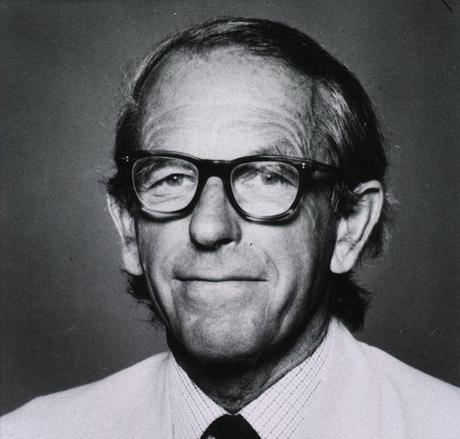Marie Curie. Everett Collection " src="https://s.yimg.com/ny/api/res/1.2/QIxGtvNTCQVhJjCXrPRWlA-/YXBwaWQ9aGlnaGxhbmRlcjt3PTk2MDtoPTc0OQ-/https://media.zenfs.com/en/the_conversation_464/e6734ea971693ccf4e7250895e551dca" data-src="https://s.yimg.com/ny/api/res/1.2/QIxGtvNTCQVhJjCXrPRWlA-/YXBwaWQ9aGlnaGxhbmRlcjt3PTk2MDtoPTc0OQ-/https://media.zenfs.com/en/the_conversation_464/e6734ea971693ccf4e7250895e551dca"/>
There is often much debate about who is the best among athletes, movie stars, leaders or artists. But some scholars have really made a staggering difference in the world.
Winning a Nobel Prize is a rare, extraordinary achievement, but five remarkable people have done it twice. Who are they? What sets them apart? And who is the greatest?
This is an inherently subjective discussion where time and context matter a great deal. Here are five top contenders.
Marie Curie - physics (1903) and chemistry (1911)
In a photo of the first Solvay Conference of Physics and Chemistry in 1911, one person stands out among the giants of physics present: the only woman. Marie Curie is the most famous of these five scientists, and for good reason.
Today's world, and science in general, is different because of her. She won her first prize for her work on radioactivity (physics), and then her second just eight years later for discovering the elements radium and polonium (chemistry). Among the laureates, she is the first woman, the first double winner, and the first (and only) in two different scientific fields.
The first prize as co-winner was shared with her husband and with Henri Becquerel. The Curies are a family of five Nobel laureates, and the institute she founded has produced four more.
Curie's achievements are all the more impressive when you consider that she had to fight for many of her opportunities, including obtaining a world-class laboratory and membership in the French academy (to which she was never selected).
Fred Sanger - Chemistry Twice (1958 and 1980)

As a molecular biologist, I must confess that I have a soft spot for Fred Sanger - he is one of my heroes. He has won two awards for creating processes for sequencing (reading the instruction booklets of) proteins and DNA.
The first, for work on the structure of insulin, he won alone. The second he shared with two other researchers. Sanger's contribution was his method for determining the structure of DNA, which is still used today.
The importance of Sanger's breakthroughs cannot be overstated. Everything from the Human Genome Project to the discipline of practical molecular biology stems from his sequencing methods. Contrary to the image of Marie Curie, Sanger was a quiet, unassuming figure. It suggests that two Nobel laureates do not all fit the same mold. He should also receive far more recognition than he does.
Linus Pauling - Chemistry (1954) and Peace (1962)
Pauling is the only person to have received two undivided prizes. Only he and Curie have won for two different fields. His discoveries in chemical bonds earned him the first, and he helped establish molecular biology as a discipline. His work inspired others in the race to understand DNA structure.
He was a pioneer in quantum chemistry and made the extraordinary prediction of the existence of alpha helices and beta sheets - the secondary structures of proteins. Had he not made fundamental errors in predicting the structure of DNA, he could have won a third prize, but it eventually went to molecular biologists Francis Crick, James Watson and Maurice Wilkins. His mistakes inadvertently helped scientist Rosalind Franklin find what was missing. Franklin was the unsung hero of the discovery of DNA, excluded from the Nobel Prize despite her crucial contribution.
His second prize was not one of the science prizes, but the peace prize. This was awarded for his passionate plea for nuclear disarmament with his wife, and he placed himself in the public eye against nuclear testing of weapons wherever possible. He received all the major chemistry prizes in his life.
John Bardeen - physics twice (1956 and 1972)
As with Sanger, Bardeen's practical breakthroughs cannot be overstated.
The invention of transistors - a device used to amplify or switch electrical signals and power - and the discovery and communication of superconductivity, in which materials conduct electricity with little or no resistance, earned him two physics prizes.
Both were shared in three ways, but he was the first to receive two awards in the same field. He really should be a household name, because his work has touched every area of our lives and influenced multiple disciplines.
Some might think that two-time Nobel Prize winners are focused primarily on their own careers, but Bardeen, through his generous collaboration with other scientists, has helped others win the physics prize.
Karl Barry Sharpless - Chemistry Twice (2001 & 2022)
Sharpless is a more modern champion and the only one still living. Both awards were shared, but are on an extraordinary list of awards he has received, including the Priestley Medal and the Wolf Medal.
His first was for a process called catalytic asymmetric synthesis. The second was for "click chemistry," in which molecular building blocks can be quickly and efficiently clicked together to form new compounds.
Not only was he the scientific 'king' of click chemistry, he was also an excellent communicator of the science behind the processes named after him.
Sharpless has transformed life around us without us knowing it by making difficult chemical processes easier. Like others on this shortlist, his passion for the subject and curiosity are boundless. In fact, in his eighties, he remains a leader in research and one of the most respected academics in the world.
So there is no archetype for two-time Nobel Prize winners. Everyone will have their own opinion about the greatest of these five. I find it hard to argue with Marie Curie, who as a female scientist in the early 20th century had to overcome enormous obstacles.
The cards were stacked against her in an extraordinary way, and she paved the way for other Nobel laureates. Sanger should also be counted among the greatest practical scientists in history, because we are still reaping the benefits of his successes through the modern genomics revolution.
This article is republished from The Conversation under a Creative Commons license. Read the original article.


